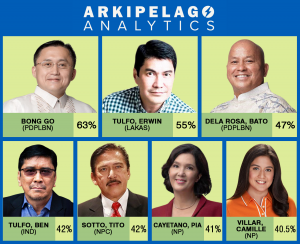MOST PEOPLE in Davao del Norte and Davao de Oro favored Davao Light taking over the franchise area following years of unreliable and expensive power service by the Northern Davao Electric Cooperative (Nordeco).
In a recent survey commissioned by the Davao Consumer Movement (DCM), 97.55 percent of respondents, including areas already being serviced by the Aboitiz-owned utility in Davao del Norte, support the takeover of Nordeco by Davao Light. In Davao de Oro, around 80 percent of respondents support the takeover.
“The people have spoken. They want a change in the power service of Davao del Norte and Davao de Oro,” Ryan Amper, DCM Convenor, said. “It also shows that political leaders who supported this move have the backing of the public, contrary to claims by Nordeco.”
“We appeal to Nordeco officials to finally give in to the wishes of the ‘member consumer owners’ they have vowed to serve. Your MCOs want change. Please respect our demand, our needs, and our aspirations for cheaper power and a better life,” he added.
Amper also pleads that Nordeco and Davao Light to already start the transition process for the betterment of the public.
Respondents in Davao del Norte said the biggest advantages Davao Light has over Nordeco are a reliable power supply (fewer and more predictable brownouts), lower rates, and customer service.
In Davao de Oro, respondents say that the lower power rates are Davao Light’s biggest advantage, and is followed by customer service and reliable power supply.
“The survey is important considering that some disinformation is being spread around to devalue the concerns and pleas of the people of Davao del Norte and Davao de Oro. This survey is a clear representation that people want change, which their leaders acted on and now has borne fruit,” Amper said.
The “rider survey,” conducted between April 20 to 26, had 1,500 respondents each for Davao del Norte and Davao de Oro using the stratified random sampling survey. A rider survey is conducted on the back of a wider survey for a more focused purpose.
In Tagum City and the Island Garden City of Samal, two major economic centers of Davao del Norte that were included in Republic Act 12144, a majority of respondents also support the change in their power service provider.
In Tagum City, a whopping 98 percent support the shift from Nordeco to Davao Light, while in the Island Garden City of Samal (IGACOS), it is at 99 percent. It should be noted that IGACOS’s tourism industry has been gravely affected by the inefficiencies of Nordeco.
In Nabunturan, Davao de Oro’s provincial capital, around 92 percent of the respondents support the shift from Nordeco to Davao Light.
“The data shows that the leaders of these areas listened to the pleas of their constituents and acted on them by going to the Congress and Senate to share the accounts of their people. These accounts allowed lawmakers to craft House Bill 11072 and Senate Bill 2888, which lapsed into law as RA 12144,” Amper said.
It should be noted that among the leaders of Davao del Norte who were notably present during the Congressional and Senate hearings on RA 12144 were Governor Edwin Jubahib, Davao del Norte Board Member Nickel Suaybaguio, Tagum City Vice Mayor Allan Lopez Rellon, and Island Garden City of Samal Mayor Al David Uy. Others present were Kapalong Mayor Maria Theresa R. Timbol, New Corella Vice Mayor Pedro H. Lagumbay Jr., Talaingod Mayor Jonnie A. Libayao, and Asuncion Vice Mayor Reynante Ayucan.
Meanwhile, respondents in Davao del Norte said the biggest advantages Davao Light has over NORDECO are reliable power supply (no brownouts), lower rates, and customer service. In Davao de Oro, respondents say that the lower power rates are Davao Light’s biggest advantage, and is followed by customer service and reliable power supply.
The survey methodology applied was “Stratified Random Sampling,” a widely-used sampling procedure which defines various demographic parameters for the sample population and allocates a pre-determined number of samples to represent each group in the determination of the total population’s awareness levels and preference selections.

